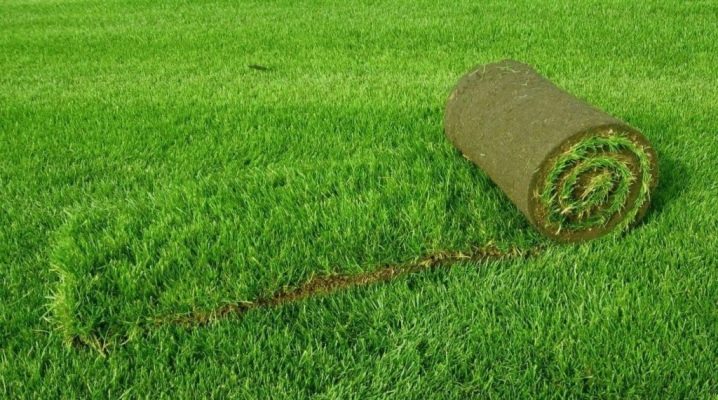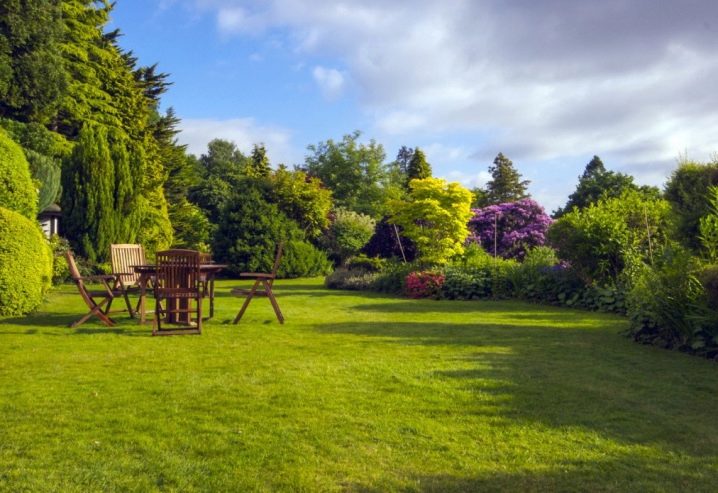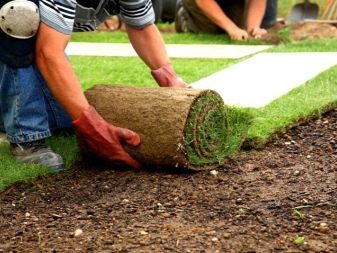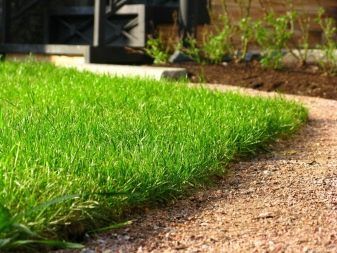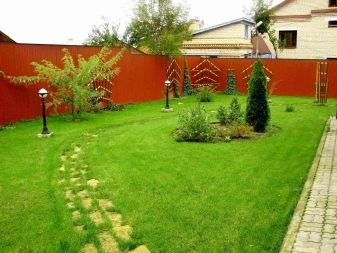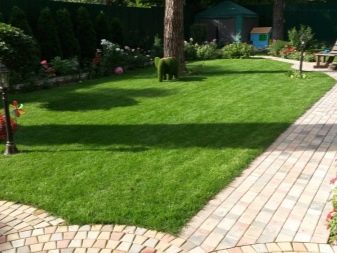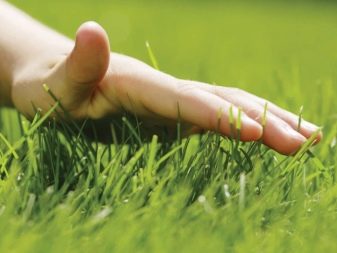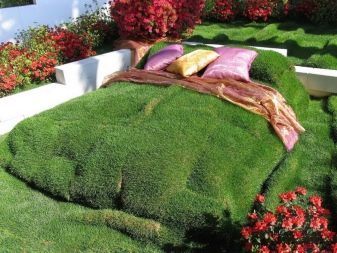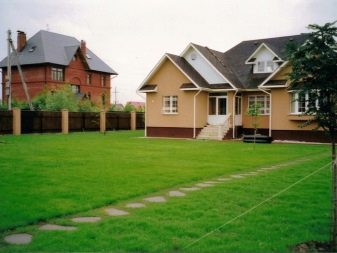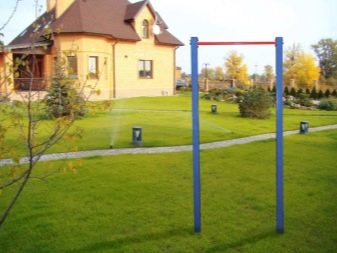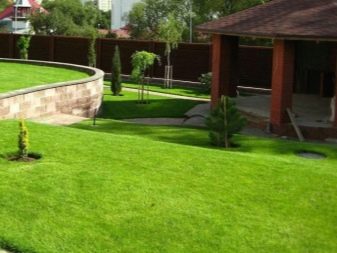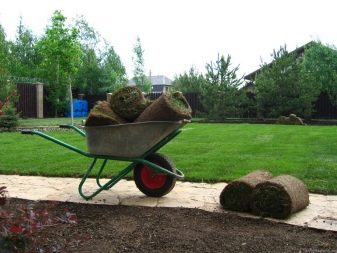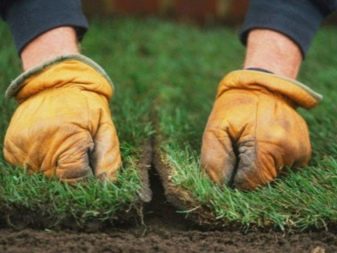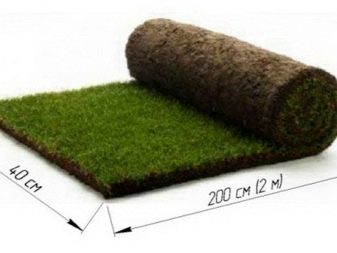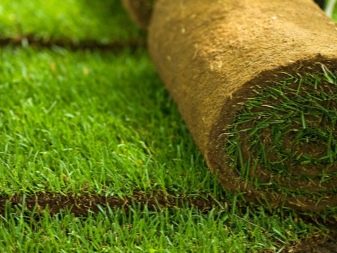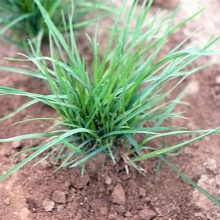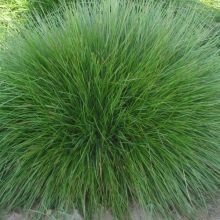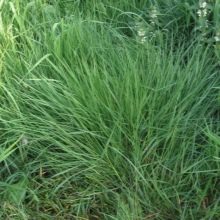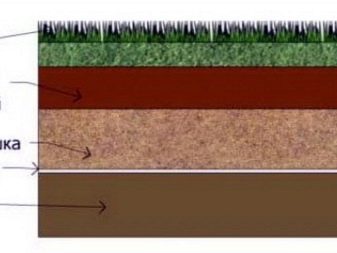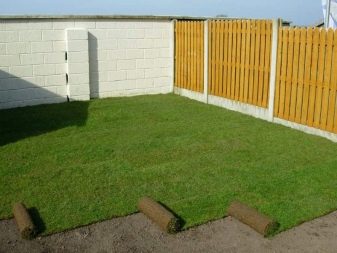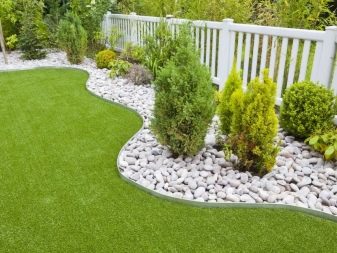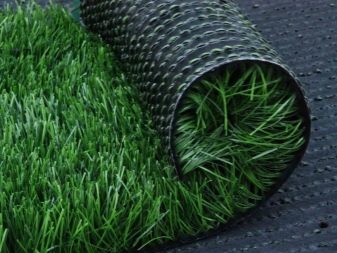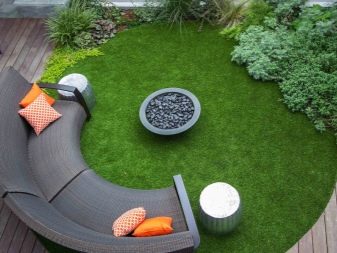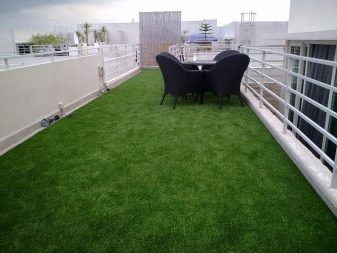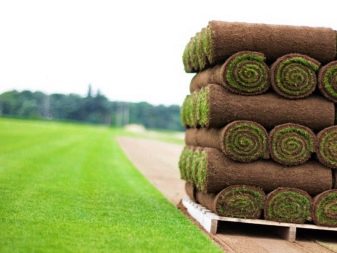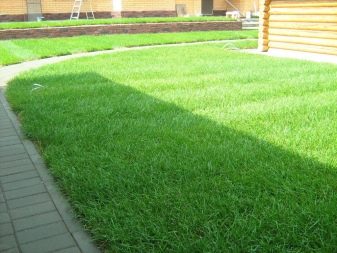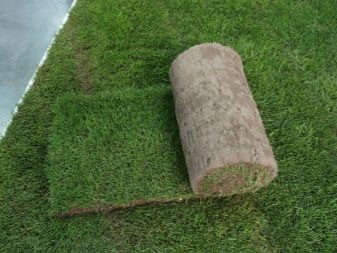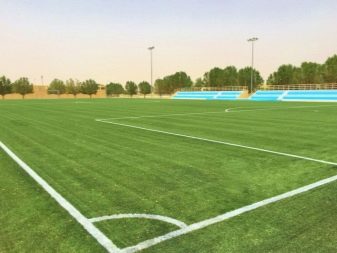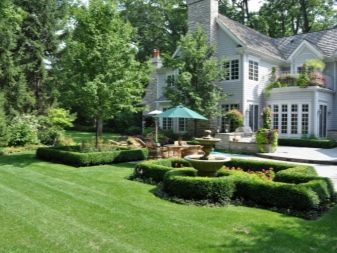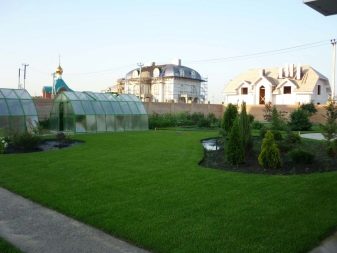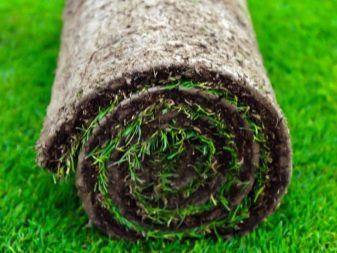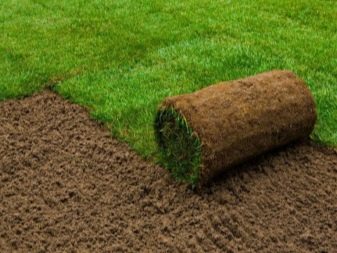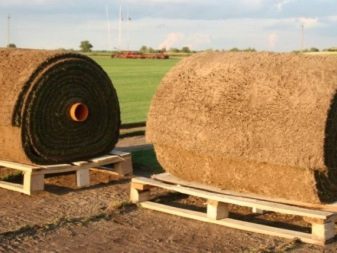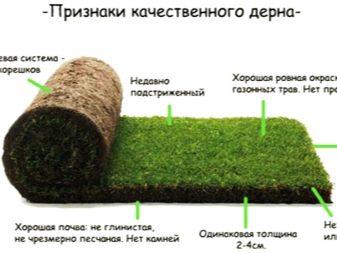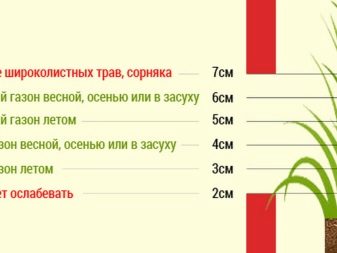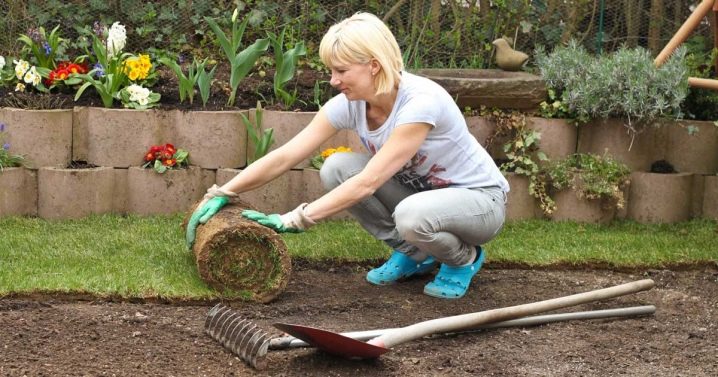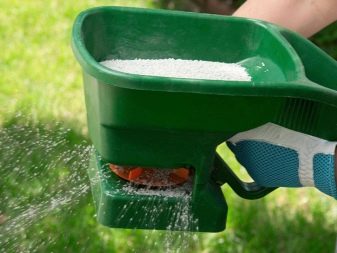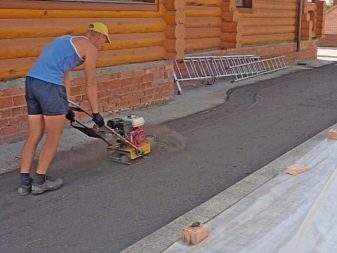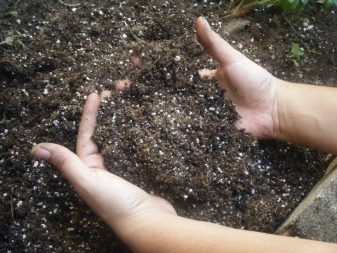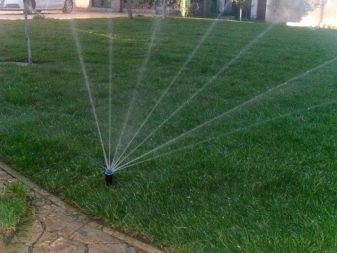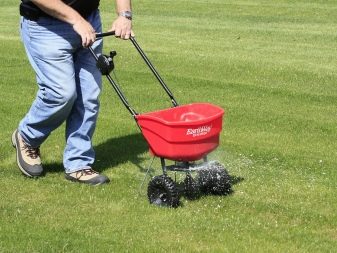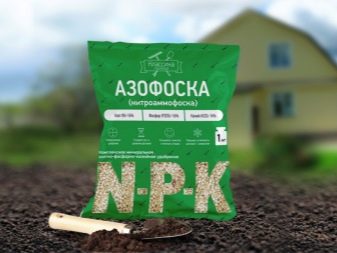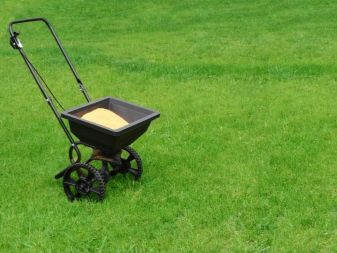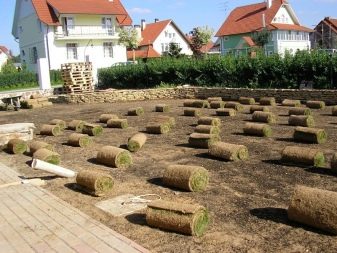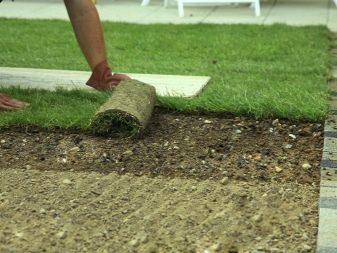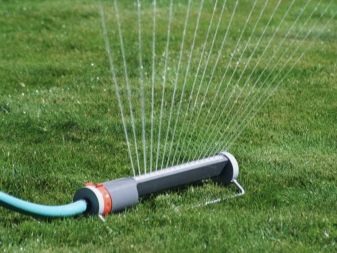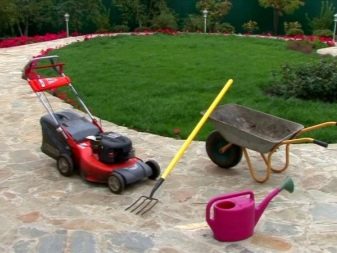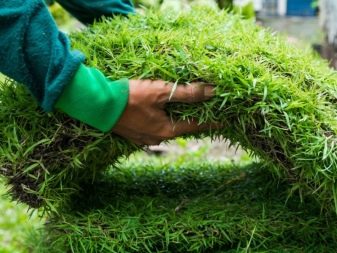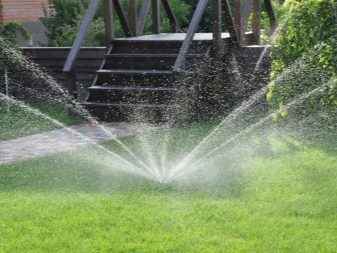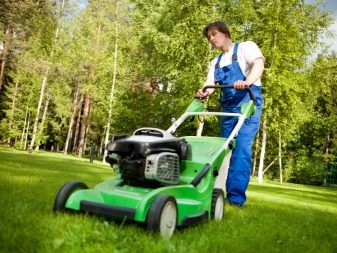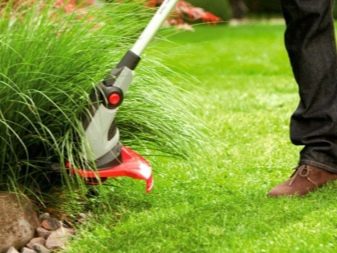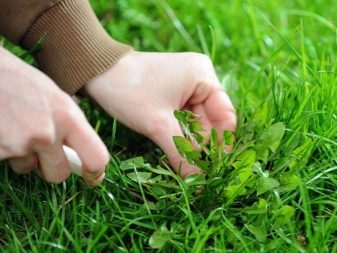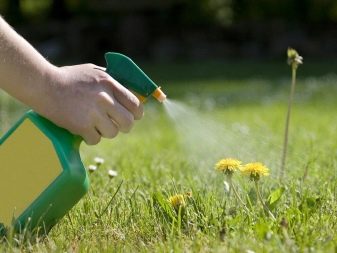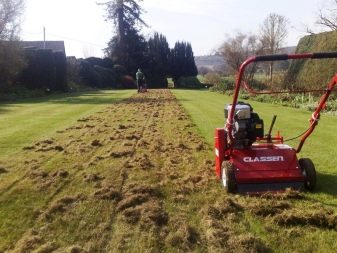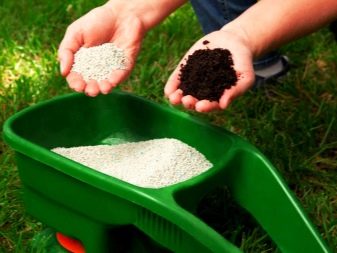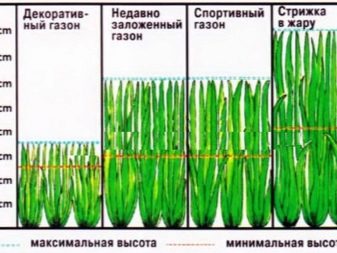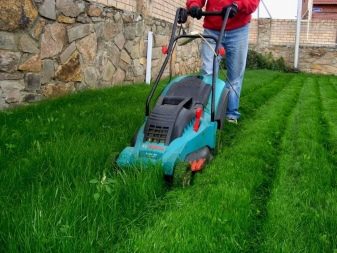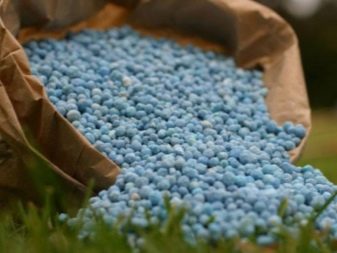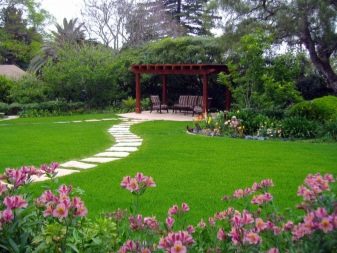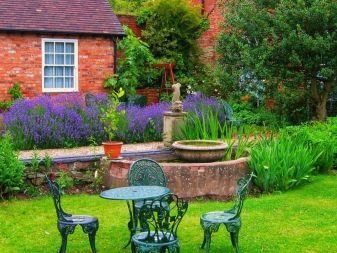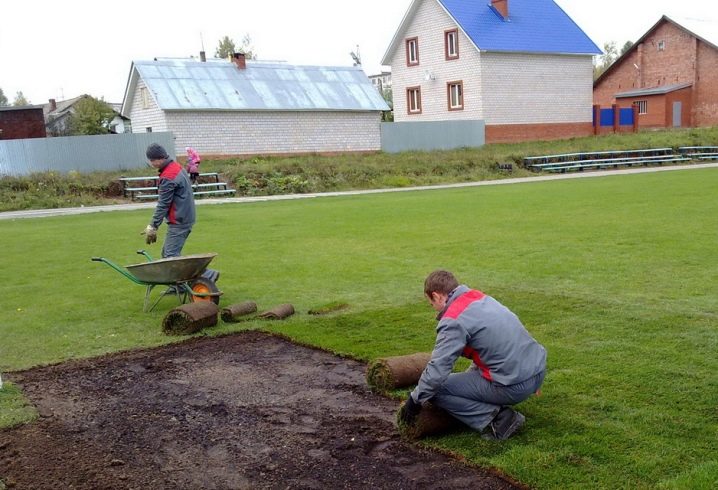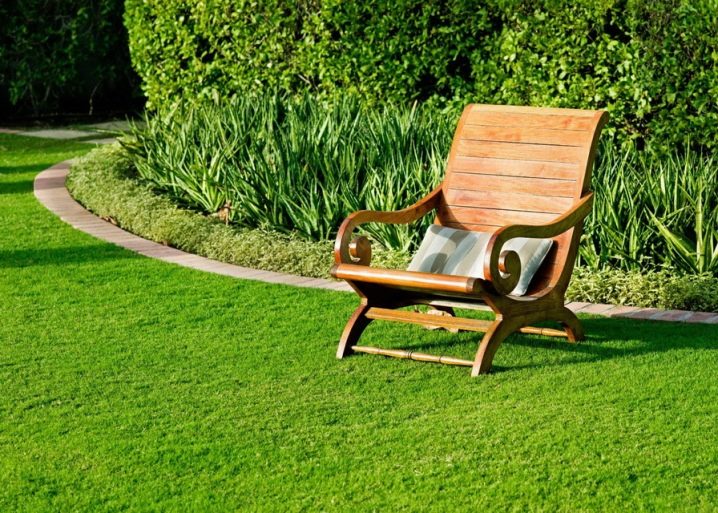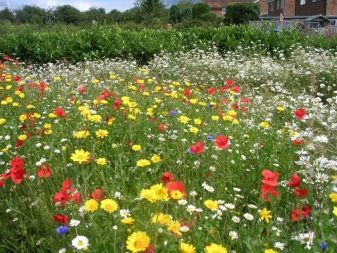Rolled lawn: types and rules of care
The lawn is a modern decoration of the garden. It is possible to facilitate the work of caring for him through the use of not only natural, but also artificial turf. There are different types of lawn, each of which needs special care.
Special features
The organization of a lawn on the site takes more than one year and requires a lot of effort. This is due to the fact that the basis of such ornamental decoration of gardens and lawns - durable turf - will be formed over many years, and soft grass will require special care. Significantly simplifies the work of the use of turf. In this case, it will suffice only to carefully approach the preparation of the foundation. In addition, the turf will save time by getting the perfect high-quality green cover in your garden or on the lawn next year.
The name of this species was due to the design features. It is produced in the form of ready-made rolls of sod, which can only be rolled on the spot.
Advantages and disadvantages
Like any coating, turf has advantages and some disadvantages.
For starters, it's worth mentioning the advantages of this type:
- it is easy to achieve uniformity of sowing, which means that the lawn is smooth and beautiful;
- it is possible to get a beautiful lawn with minimal cost;
- the turf used has excellent drought and waterlogging resistance;
- in order to put a rolled lawn, it is not necessary to wait for spring or autumn;
- ease of care is that within 2 years after installation, you can not think about weeding;
- highly resistant to trampling;
- easy to maintain, as it is not susceptible to cold. It is much easier to clean than grown;
- easily restore damaged areas;
- helps to hide irregularities, and also applies on difficult reliefs;
- variety of species allows you to choose the best option with the necessary specific properties;
- long service life.So, in the city the turf will last about 5-6 years, while in the suburban areas it can serve up to 15 years.
Do not forget about the minuses. The main disadvantage is the high cost, but it is worth understanding that these investments are long-term, and they will pay off gradually, as they will save money on further maintenance.
In addition, it is worth mentioning the following disadvantages:
- in a darkened area, grass quickly fades;
- during operation, felt is formed under the roll, in which harmful bacteria are infused that can adversely affect the appearance of the entire lawn;
- after the purchase, you will have to spend a lot of money, since it will be very difficult to transport, unload and lay the turf without damaging it;
- if the grass died on one of the sites, there may be a problem with its recovery.
Even with all the disadvantages available, roll coating is better than seed because of its ease of maintenance and durability. In addition, it is already ready to use, which makes it possible to enjoy the finished view.
Composition
On the territory of Russia produced various types of rolls.The standard size is 4x2 m with a mass of 15 kg. If necessary, you can order a larger version and, accordingly, more difficult. The composition of the rolled cover includes a plastic honeycomb frame and specially prepared turf. The length of the sections formed after cutting is 2 m with a thickness of 20–25 cm, their width does not exceed 40 cm.
Such rolls are conveniently transported, rolled over the prepared surface of the site.
The composition should be considered in more detail:
- The first layer is grass, whose height can reach 4-7 cm.
For a better look, a mixture of herbs is used:
- Meadow grass;
- Fescue Various varieties of this plant remain green even in dry time;
- Reigras. Perennial plant, characterized by rapid growth.
- The second layer is the frame. In some cases, can use a plastic honeycomb mesh, which provides special strength turf frame due to its flexibility. Felt or burlap can be used. The thickness of this layer is 0.5-1 cm. Sometimes, in the description of a rolled lawn, it is indicated that no additional components of the substrate were used in its manufacture, since the turf has a high density, forming a natural frame.
- The third layer is directly ground, its thickness is 1.5 cm. The thinner this layer is, the better. The fact is that, as such, there is little soil, mainly grass roots. So, the thinner the layer, the greater the likelihood that such a lawn will take root in a new place.
Kinds
Modern lawns sold in the form of rolls can be divided into two large categories:
- depending on the material used;
- depending on the purpose for which the coverage was purchased.
Using a turf, you can quickly and efficiently create a green zone on your site. A variety of types allow you to choose the option that turns out to be optimal. Lawn cover can be presented in various types:
- Artificial turf grass in rolls. A great option when you need to refine the site for a while. Most often, artificial turf is used to cover the ground after harvesting, for decorating graves as a cheaper alternative to grass. Modern technologies allow you to get a great coating that will visually be almost indistinguishable from real grass,and does not fade in the sun;
- Standard. Special coating age not less than 2 years, which uses bluegrass. The color of the grass is natural dark emerald. It can withstand a short-term drought, however, it is still better not to forget to water the lawn. Not bad tolerate low temperatures. May be subject to slight mechanical impact without damage to the cover. It is recommended to use the standard version in open, sunny areas, but not in dark areas. It is easy to care for him, so that it can be used for decoration of various sections. It has a low price;
- Universal. When creating used bluegrass seeds and fescue. Grass color is bright green. Differs in very strong, dense and uniform structure. It can easily withstand cold winters, spring thawed snow, and summer drought, however, it is not worth neglecting irrigation and additional protection. The coating does not fade in the sun, it can also be applied in dark areas, as it uses a shade-tolerant variety of grass. Fescue always keeps a beautiful green color;
- Sports. It has increased strength due to a reliable substrate and a strong root system. The herbs possessing high elasticity are used.The lawn can withstand various mechanical loads, quickly restores its original shape. It tolerates low temperatures, shade and scorching sun. Perfectly withstands mowing;
- Elite. When creating it, the seeds of meadow grass are used. It gives the lawn a dark green color. The grass grows quite tight and uniform. The lawn can withstand short-term frost or drought. The resulting “live” roll perfectly tolerates small mechanical loads, can easily adapt to any type of soil. Great for use in playgrounds, as well as for the design of open areas on which landscape compositions of premium class are created. Usually sold options with grass no more than 2 years old.
Dimensions
Choosing for yourself a lawn in rolls, it is necessary to pay attention not only to the time of cutting, but also to how the rolls are folded, how the grass is located in them.
It must meet certain standards:
- Standart rolls. The most common of all. Each roll has a size of 2x0.4 m, a thickness of 2-3 cm and weighs 18-26 kg;
- Slab rolls. Often used as a repair material for restoring a damaged lawn. The dimensions of the canvas are 1x0.4 m with a thickness of 2-3 cm. Such a roll weighs 10–12 kg;
- Smart rolls.Mainly used in landscaping public areas. This is facilitated by the dimensions of 0.55 x 26 m with a thickness of 2-7 cm and a weight of 250-360 kg. Due to the large size and weight, it is necessary to use special equipment for laying and to hire a team of specialists;
- Big rolls. This turf has really huge sizes - 1.2x26 m. Variants are used to design sports fields, various objects or areas of large footage.
How to choose?
If you need to choose a high-quality green lawn, you should take into account the selection rules, so as not to buy material that will become unusable after a while.
Note the following:
- The grass in the roll should be fresh, and the plateau itself should not be "older" than 1 day. It is best to buy a lawn directly on the farm or on the farm, where it is cut directly on the day of order. If yellowness is seen, and the grass smells like charm, then it is better to abandon the purchase;
- Measure the height of the grass. The grass should be trimmed evenly and have a height of 2-4 cm. If the height of the grass is more or less, there is a chance that the seller is trying to hide the existing material defects;
- Look at the grass. It should be thick and dense enough.Only in this case it will delight from the very moment of laying. Thus, a quality lawn has a density of 50 blades of grass for every 10 square meters. cm;
- Grass should cover the entire surface of the lawn blade. There should be no plow holes and no breakthroughs;
- It is recommended to roll out and immediately roll up the roll, and repeat this action several times. A fresh stratum will endure this test, and the one that has already lain down will break or begin to crumble;
- Examine the root system. It must be strong, be sure to have white roots in large quantities. In this case, the chances that the planting material will take root are higher.
Cultivation technology
Those who do not want to spend a lot of money on the purchase of a lawn turf should know how to grow such an option at home. It is necessary to immediately determine whether a special plastic mesh of agrofibre will be used to provide increased strength or not. You can grow a lawn without it, but professionals recommend using such a cellular grid, especially in places where high loads are expected. The second important factor is properly selected grass. It takes into account the purpose of this site.
It is best to use cultures such as:
- meadow grass;
- red fescue;
- perennial ryegrass.
It should be borne in mind that from the time of sowing to full maturation and securing the root system will take at least one and a half years. Best to wait 3 years. Ryegrass is added as it quickly rises, immediately starting to please with greens. If transplantation of grass is planned in the future, then the layer with rye grass can be planted even on sand.
The cultivation technology is as follows:
- Soil preparation is underway. For this, it is best to use a special cultivator or plow. After processing, all large lumps are broken using a rake or harrow.
- The prepared soil is treated with herbicides. It is necessary to apply chemicals aimed at the destruction of all living things in this area. This will eliminate all weeds.
- Laying special mesh. This step can be abandoned if the load on the sod layer is minimal.
- Seed is planted.
After planting do not forget about watering and feeding. In addition, the grass should be subjected to regular cutting.This will allow to obtain a uniform and dense coverage of the entire area, as well as strengthen the root system. Last haircut should be done in late autumn before the snow falls. If the lawn was carried out without using the net, then it is possible to carry out such a procedure as aeration.
Most often it is carried out in late spring or early autumn. Thanks to her, the roots easier to get oxygen, moisture and nutrients.
We select fertilizer
It is necessary to fertilize the soil before planting, as well as after 30 days from the moment of the laying works. It is recommended to use the complex "Azofoska" at the rate of 20 g of fertilizer per square meter. The use of urea per 10 g per 1 square meter is allowed. After 1.5-2 months it is necessary to re-feed, and phosphate fertilizers should be applied in the fall, and nitrogen fertilizers in the summer.
Life time
The service life of such a garden cover may be different. It depends not only on the environmental situation, but also on many other factors. Thus, in urban conditions, the lawn does not require recovery within 5–6 years, while outside the city it can last 10–15 years. Service life can be extendedif you properly care for the coating, cut it in a timely manner, apply fertilizing in time and water it, while at the same time protecting it from excessive moisture.
Care
Care begins with the purchase and installation. Only if certain rules are observed, it will be possible not only to get a high-quality and beautiful lawn, but also to ensure its attractive appearance for a long time. So, it is recommended to water the soil before and after laying the lawn cover. If the weather is dry and hot, then in the evenings it is worth watering the area carefully to ensure an adequate level of moisture, at the same time not allowing the grass to wither.
Morning watering is not desirable, because the water does not have time to soak or evaporate, which can lead to a deterioration in appearance.
If we talk about watering, then after strengthening the root system at a new location, it will be possible to water the grass once every 10 days, provided that there is very little precipitation and the soil is sandy. If there is more sand under the coating, then you need to water it at least 2 times a week. For uniform watering is better to use a spray. Also recommend the use of automatic polivalki and sprayers.
The first haircut should be performed 2 weeks after planting. It should be carried out against the direction in which the rolls were laid. Knives should be configured so that they cut only the top of the grass. A week later, you can repeat the haircut, lowering the knives. Over time, knives can be lowered lower and lower, gradually bringing the length of grass to the desired level.
Last season you should mow the lawn before the snow falls, and the height should be 4-4.5 cm.
If the soil is properly prepared, weeds will not be 2 years old, but after this period they will inevitably appear. Their timely removal will avoid the formation of bald spots on the finished green lawn. Weed control can be used for weeding or spraying with special means. As soon as the snow melts, you need to make additional feeding, as well as to carry out the first haircut, and you need to start from the tips, gradually lowering the blades until the required length of grass is reached. In different seasons, you need to take care of the lawn in different ways:
Spring
In March or early April, as soon as the snow melted and puddles appeared, it is necessary to conduct aeration. The easiest way is to make holes in the sod using a fork.This will help the soil to absorb moisture better, as well as improve air access to the roots. In April, it is recommended to conduct top dressing using complex fertilizers. As soon as the earth dries, the surface of the lawn must be carefully “combed” with a rake, without violating the integrity of the sod base. It should promptly remove dry grass, as well as fallen leaves and rotted parts of the turf. In May, it does not hurt to hold the first lawn mowing. It is important that the final length of the grass is about 5-6 cm - this will not cause serious damage to the grass.
Summer
Cut the grass should be up to a height of 4 cm. This will avoid the enhanced growth of weeds. Make sure that the mower knives are always sharp, do not damage the grass. It is necessary to cut the coating at least 1 time in 7 days. After the haircut should be slightly "comb" and plenty of water lawn. If necessary, you need to carry out dressing, remove all weeds found. For this you can use herbicides directional.
Autumn
In the September days should be a kind of repair lawn. All overgrown weeds, damaged or dead areas are removed.After that, empty places should be sown with grass, you can also purchase special pieces of turf repair. In October, it is recommended to feed with the use of phosphate-potassium fertilizers. In November, the last haircut is done, the grass is left 5 cm high or more.
Winter
Try to ensure an even distribution of snow over the entire surface. Do not walk up to the lawn as long as it is not completely hidden under the snow cover.
Reviews
Rolled lawns are represented by a fairly large selection of coatings, ranging from artificial to natural layers. Many buyers note that immediately after the purchase and installation there is an opportunity to enjoy the pleasant green grass that adorns any part. It is noted that it is necessary to correctly compose the landscape composition, as well as to fulfill all the conditions for laying and caring the lawn. In this case, the grass will be not only thick, but also quite elastic.
Say buyers and about the shortcomings. First of all, among all the minuses high cost of such coatings is distinguished, however, the first 1-2 years of care for it are minimal and require almost neither effort, nor time, nor additional costs, so all expenses are more than covered. Indicate the weight of the rolls.
Since, due to the large mass, it is almost impossible to lay the cover on your own, you have to hire professionals.
Beautiful examples and options
In addition to these types of lawns, there are also such unusual options:
- Parquet. It has a presentable appearance. Most often used for arranging prominent, significant places. Such a turf can be laid in front of the house, for example. Its disadvantages are the laboriousness of styling and care, the need to create special conditions;
- Shadow. This option is often decorated with zones that are constantly in the shade. It uses special types of herbs that can withstand difficult conditions, such as lack of sunlight and high humidity. Care of this lawn is simple, as it does not need to be cut often - it is enough 1-2 times a month. Be sure to regularly aerate the soil;
- Mauritanian. It is a lawn with flowers. Perfect for decorating the garden or playground in front of the house. For its manufacture uses a mixture of grass seeds and perennial flowers with a low stem. Use of bulbous plants is allowed.It is important that flowers bloom all the time, gradually replacing each other. They use calendula, decorative poppies, cornflowers, flax flowers and many others.
You can always create something original and unusual, if you choose the version of the turf, which is suitable for a particular site.
For information on how to properly lay the lawn and care for him, see the following video.
